- What is a Distribution Channel?
- Functions of Distribution Channels
- Types of Distribution Channels
- Components of a Distribution Channel
- Distribution Channel Levels
- Channel Management Strategies
- Functions of Distribution Channels
- Impact on Pricing Strategies
- Channel Costs and Efficiency
- Trends in Distribution Channel Consolidation
- Summing Up
- Frequently Asked Questions
Distribution Channels: Importance, Types, Functions and Strategies
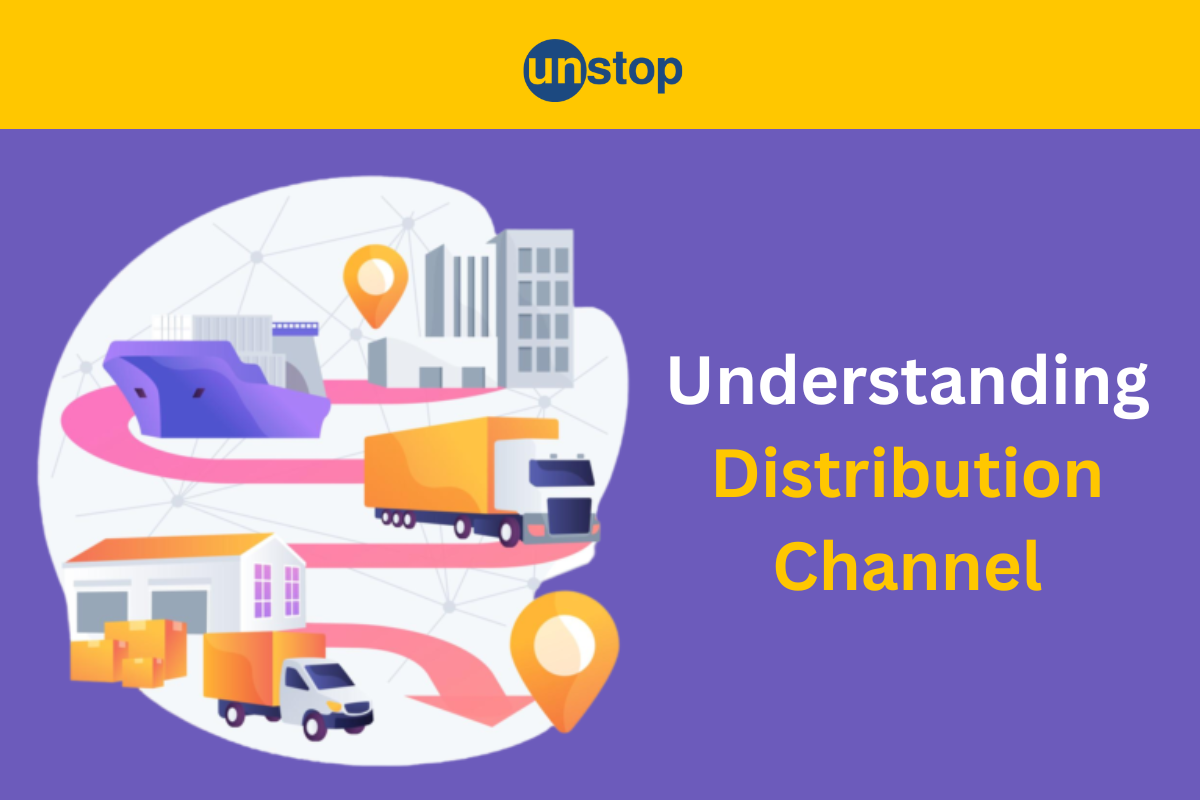
In today's competitive market, no product reaches a customer without passing through a well-planned system called the distribution channel. It connects the producer with the end consumer through a chain of intermediaries.
In this article, we will take a deep dive into the intricacies of a distribution channel and explore its types, functions, and significance in today's dynamic market landscape.
What is a Distribution Channel?
A distribution channel is a chain of individuals or organizations, such as wholesalers, distributors, and retailers, through which a product or service passes until it reaches the final buyer or end consumer.
Distribution channels act as a bridge between producers and consumers, ensuring that products are available where and when customers want them.
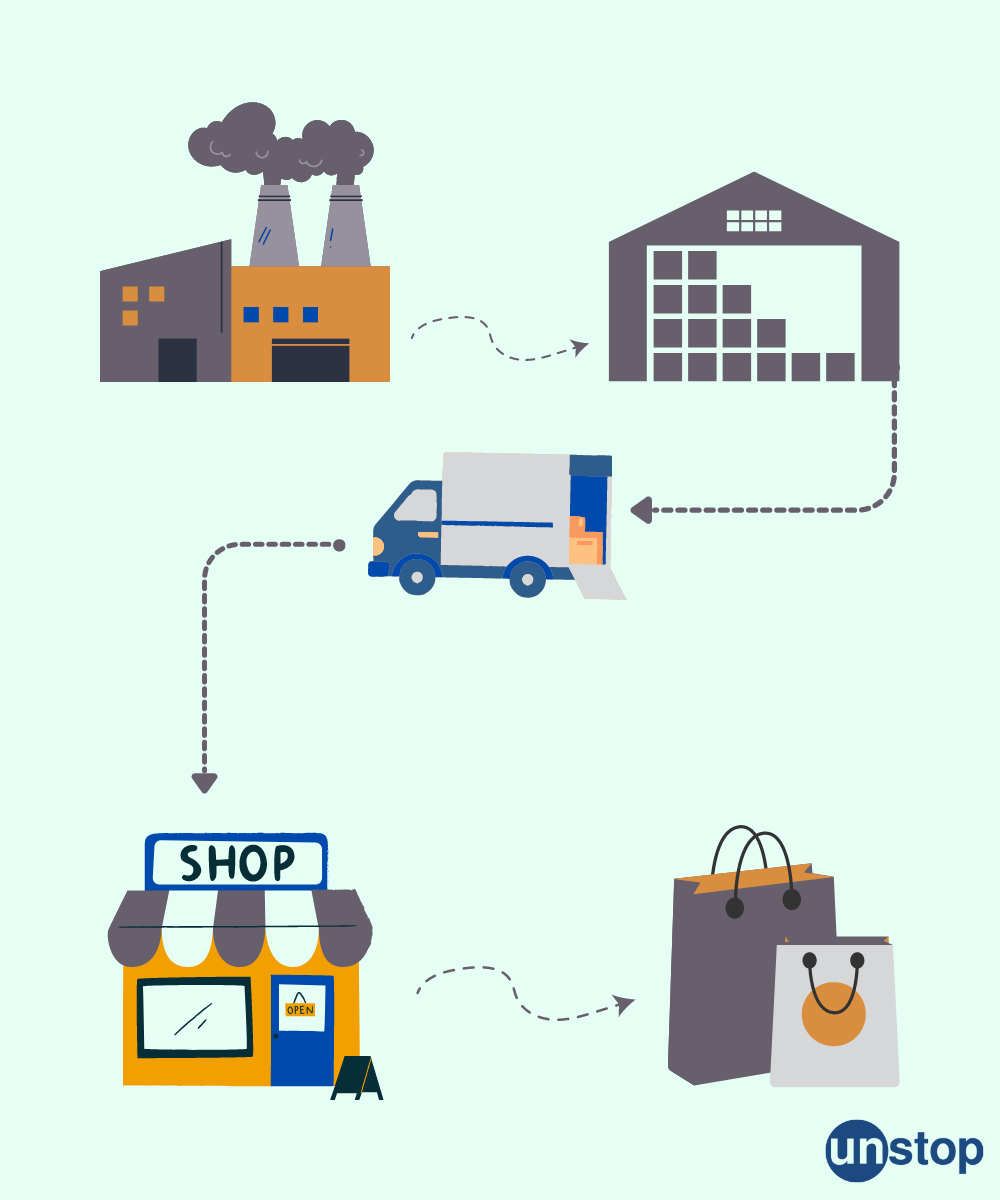
Importance of Distribution Channels
Understanding the importance of distribution channels helps to streamline the supply chain strategy in business and marketing. Here’s a breakdown of why they matter:
1. Ensures Product Availability to Customers
Distribution channels guarantee that the product reaches the right place at the right time. Whether it’s through retail stores, e-commerce platforms, or wholesalers, an efficient channel ensures continuous product availability, preventing stockouts and lost sales.
2. Reduces Transaction Costs
By acting as intermediaries, distribution channels help minimize the number of transactions between producers and consumers. Instead of the producer dealing with every single customer, channels consolidate sales and distribution tasks, saving time and money.
3. Enhances Market Coverage
Channels allow businesses to expand into new geographical areas and customer segments without needing to set up their own infrastructure everywhere. This results in broader market coverage with reduced investment.
4. Improves Customer Convenience
Well-established distribution channels improve accessibility and convenience for customers. Whether customers prefer buying online, at a retail store, or through a dealer, channels cater to their purchasing behavior and expectations.
5. Facilitates Storage and Inventory Management
Distributors and wholesalers play a crucial role in holding inventory and managing warehousing, which helps manufacturers maintain lean production systems. This prevents the need for producers to manage massive storage facilities.
6. Provides Feedback and Market Insights
Distribution channels serve as touchpoints for gathering market intelligence. Retailers and intermediaries often interact directly with customers, enabling them to relay valuable feedback to producers regarding product performance, preferences, and trends.
Types of Distribution Channels
Distribution channels are broadly classified based on their structure, the level of intermediary involvement, and the nature of the product. Let’s explore the various types of distribution channels accordingly:
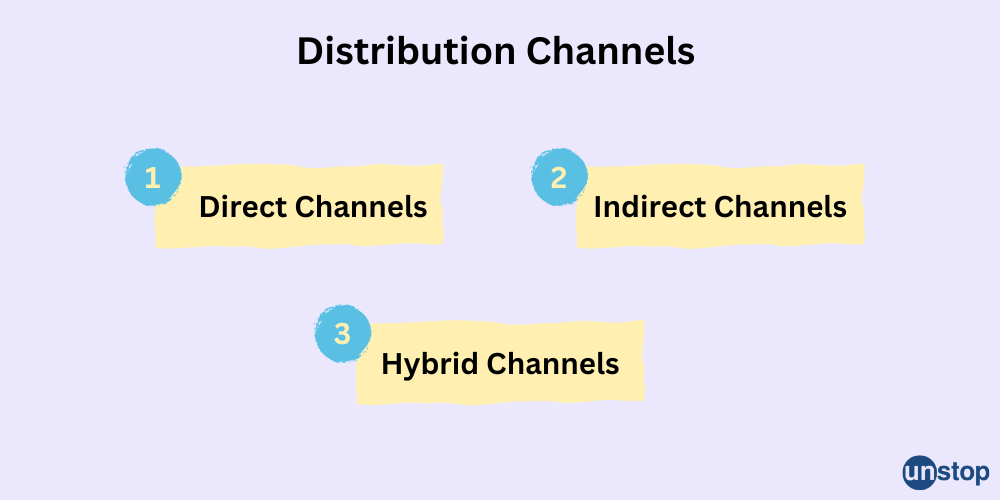
Direct Distribution Channel (Zero-Level Channel)
In the direct distribution channel or zero-level channel, no intermediaries are involved. The manufacturer sells directly to the customer through channels such as company-owned outlets, online stores, or direct mail.
Key Features of Direct Distribution Channel (Zero-Level Channel)
- Full control over pricing and customer experience
- Higher profit margins (no middlemen)
- Suitable for customized or perishable products
Indirect Distribution Channel
In the indirect distribution channel, one or more intermediaries are involved in the distribution of goods from the producer to the consumer. Typical there are three types of indirect distribution channel level:
One-Level Channel
A one-level distribution channel is a type of indirect distribution where only one intermediary (typically a retailer) stands between the manufacturer and the final consumer. This model is common in sectors where producers need wider market reach but still want to maintain a closer relationship with the customers than in multi-level channels.
Structure
Manufacturer → Retailer → Consumer
Key Characteristics
- Single intermediary (no wholesalers or agents involved)
- Suitable for fast-moving consumer goods (FMCG) or consumer electronics
- Often used by brands with established retail partnerships
Advantages of One-Level Channel
- Faster delivery to consumers than multi-level channels
- Reduced distribution cost compared to two- or three-level models
- Greater control over product pricing and branding
- Helps maintain a closer connection with the end user through the retailer
Disadvantages of One-Level Channel
- Still less direct contact with consumers than direct channels
- Dependence on retailers for customer experience and feedback
- Limited control over retail pricing and promotions
Two-Level Channel
A two-level distribution channel involves two intermediaries between the manufacturer and the final consumer, usually a wholesaler and a retailer. This model is widely used for goods that need broad market coverage, especially in rural or semi-urban areas or where bulk buying and redistribution are efficient.
Structure
Manufacturer → Wholesaler → Retailer → Consumer
Key Characteristics
- Involves bulk breaking and wider reach
- Common for FMCG products, pharmaceuticals, and household goods
- Often used by companies without direct access to end markets
Advantages of Two-Level Channel
- Efficient distribution over large geographic areas
- Lower inventory burden on manufacturers
- Leverages wholesalers’ existing market networks
- Ensures product availability even in remote areas
Disadvantages of Two-Level Channel
- Reduced profit margins due to more middlemen
- Less control over the product's final pricing, branding, and customer service
- Slower feedback loop from the end consumer
- Risk of channel conflict or dependency on intermediaries
Three-Level Channel
A three-level distribution channel includes three intermediaries between the manufacturer and the final consumer: typically, a wholesaler, a jobber (or sub-wholesaler), and a retailer. This is common in industries where the product requires extensive distribution across vast or complex markets, often involving smaller retailers who cannot buy in bulk directly from wholesalers.
Structure
Manufacturer → Wholesaler → Jobber (Sub-wholesaler) → Retailer → Consumer
Key Characteristics
- Adds an extra layer to the distribution chain to facilitate the breakdown of bulk goods
- Widely used in sectors like fast-moving consumer goods (FMCG), pharmaceuticals, and agricultural products
- Enables reaching very small retailers or remote locations
Advantages of Three-Level Channel
- Enhances market penetration and extensive reach
- Jobbers handle smaller orders, making it easier for retailers with limited capital to stock goods
- Reduces the logistical burden on wholesalers by passing some responsibilities to jobbers
- Facilitates better product availability in small or rural retail outlets
Disadvantages of Three-Level Channel
- Increases costs and pricing layers, potentially reducing manufacturer and retailer margins
- More complexity and potential for communication gaps in the supply chain
- Risk of channel conflicts due to multiple intermediaries
- Less control over the product’s marketing and customer experience
Hybrid Channel (Dual Distribution)
A Hybrid Channel, also known as Dual Distribution, involves a manufacturer using more than one type of distribution channel simultaneously to reach customers. This approach combines direct and indirect channels, or multiple intermediaries, to maximize market coverage and cater to different customer segments.
Structure
- The manufacturer sells directly to customers (e.g., via online store or company-owned outlets)
- Simultaneously, the manufacturer distributes through intermediaries such as wholesalers, retailers, or agents
Key Characteristics
- Provides flexibility in reaching diverse customer groups
- Helps balance cost efficiency and customer accessibility
- Allows manufacturers to maintain control over brand and pricing in some channels while leveraging intermediaries for wider reach
- Common in industries with complex markets or varying customer needs
Advantages of Hybrid Channel
- Expands market reach by tapping into multiple channels simultaneously
- Increases customer convenience by offering products through various outlets
- Allows manufacturers to maintain control in direct sales while benefiting from intermediaries’ distribution strengths
- Reduces dependence on a single distribution channel, mitigating business risks
Disadvantages of Hybrid Channel
- Can cause channel conflict between direct sales and intermediaries if pricing or policies are not managed well
- Requires more complex coordination and management
- May increase overall distribution costs due to maintaining multiple channels
- Needs clear policies to avoid overlapping markets and competition among channels
Reverse Distribution Channel
A Reverse Distribution Channel refers to the process of moving goods from the customer back to the manufacturer or supplier. Unlike traditional channels that focus on delivering products to consumers, reverse channels handle the flow of returned, recycled, or unwanted products.
Purpose and Functions
- Returns Management: Handling customer returns due to defects, dissatisfaction, or warranty claims
- Recycling & Disposal: Collecting used products for recycling or environmentally safe disposal
- Refurbishment & Reuse: Recovering products that can be repaired or refurbished for resale
- Recall Management: Managing the return of products from the market due to safety or compliance issues
Process Flow
- Customer initiates product return or disposal
- Returned goods move from retailers or customers to distributors, collection centers, or directly back to manufacturers
- Products are inspected, sorted, repaired, recycled, or disposed of responsibly
Importance of Reverse Distribution Channel
- Helps companies reduce waste and promote sustainability
- Enhances customer satisfaction by offering easy return and exchange processes
- Supports regulatory compliance with environmental laws and product safety standards
- Enables value recovery by refurbishing or reselling returned products
Advantages of Reverse Channel
- Builds trust and loyalty with customers through hassle-free returns
- Contributes to corporate social responsibility by supporting recycling and reducing landfill waste
- Allows companies to recover costs by refurbishing or reselling returned goods
- Improves inventory management by efficiently handling excess or obsolete products
Challenges of Reverse Channel
- Requires complex logistics and tracking systems
- Can increase operational costs if not managed efficiently
- Needs clear policies and communication with customers and channel partners
Digital Distribution Channel
A Digital Distribution Channel is a method of delivering products or services to customers via online platforms, minimizing or eliminating the need for physical intermediaries. These channels leverage the internet and digital technologies to sell and distribute a wide range of goods, including software, media content, digital products, and even physical items through e-commerce platforms.
Key Features
- Direct-to-Consumer Delivery: Products are sold and delivered directly via websites, apps, or online marketplaces
- Instant Access: Digital products like e-books, software, music, and videos can be downloaded or streamed immediately
- Global Reach: Enables businesses to reach customers worldwide without geographic constraints
- Lower Costs: Reduces expenses related to physical stores, inventory, and traditional intermediaries
Types of Digital Distribution Channels
- Company Website: Online stores owned by the company to sell products or services directly
- E-commerce Marketplaces: Platforms like Amazon, Flipkart, eBay where multiple sellers offer products
- Mobile Apps: Apps offering digital products or services, including subscriptions and in-app purchases
- Digital Content Platforms: Streaming services, app stores, and software repositories distributing digital media or software
Advantages of Digital Channel
- Convenience: Customers can shop anytime, anywhere
- Speed: Immediate product delivery, especially for digital goods
- Scalability: Easily handle large numbers of customers and transactions
- Data Insights: Enables tracking of customer behavior and preferences for targeted marketing
Challenges of Digital Channel
- Competition: High competition on popular digital platforms
- Technical Issues: Need for reliable infrastructure and cybersecurity measures
- Digital Divide: Access issues for customers in areas with poor internet connectivity
- Customer Trust: Building trust for online payments and product authenticity
Components of a Distribution Channel
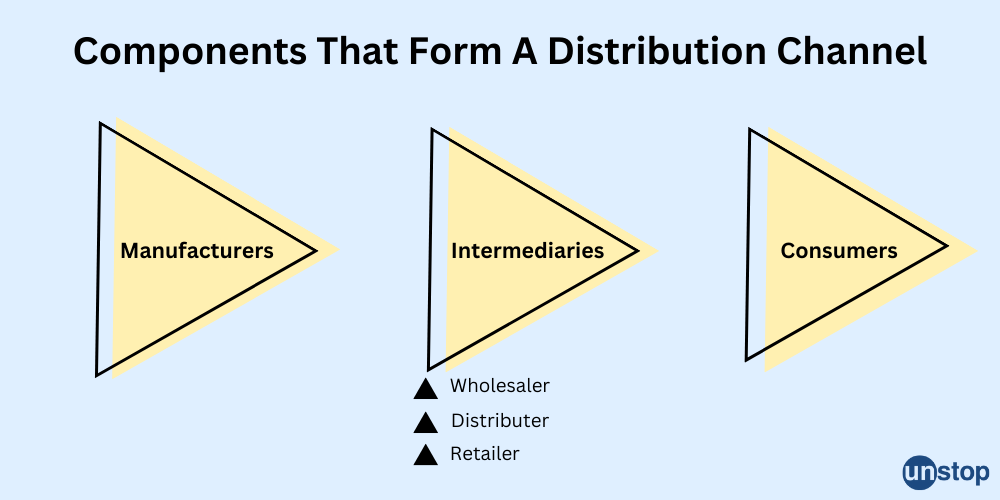
1. Manufacturers
Manufacturers play a crucial role in the distribution channel. They are responsible for producing goods and ensuring their quality. Once the products are ready, manufacturers must decide how to get them into the hands of consumers. Some manufacturers choose to sell directly to consumers through their own stores or websites, while others use intermediaries such as wholesalers or retailers.
In some cases, manufacturers may also work with distributors who help get their products into retail stores or other outlets. For example, a clothing manufacturer might sell its products to department stores through distributors who specialize in getting clothing lines placed in different retail locations.
2. Intermediaries
Intermediaries in a distribution channel are entities that assist in moving products from manufacturers to consumers. These can include wholesalers, distributors, and retailers. Wholesalers purchase large quantities of products from manufacturers and then sell them to retailers at discounted prices.
Distributors act as middlemen between manufacturers and retailers by purchasing goods from the former and selling them to the latter at marked-up prices. Retailers, on the other hand, directly interact with consumers by selling products through physical or online storefronts.
Wholesaler vs. Distributer vs. Retailer: A wholesaler purchases goods in bulk from manufacturers and sells them to retailers in smaller quantities at a markup. A distributor, similar to a wholesaler, focuses on efficient product distribution but often represents specific brands. A retailer sells goods directly to consumers in smaller quantities and is the final link in the distribution chain.
3. Consumers
Consumers represent the end point of any distribution channel. They are individuals or organizations that purchase goods for personal use or resale purposes. Depending on the type of distribution channel used, they may buy products directly from manufacturers (in cases like factory outlets) or from various intermediaries such as wholesalers and retailers.
Ultimately, understanding how these three components - manufacturers, intermediaries, and consumers - function within a distribution channel is essential for businesses looking to effectively bring their products to market.
Functions of Distribution Channels
Let us now study some of the key functions of distribution channels:
Transportation: Moving goods to different locations
Transportation refers to the physical movement of products from manufacturers to wholesalers, retailers, or end consumers. It is a critical function because it ensures the timely delivery of goods to the right place. Efficient transportation systems (like trucks, trains, ships, or planes) help minimize delays, reduce costs, and maintain product quality during transit.
Warehousing: Storing goods until needed
Warehousing involves the storage of goods in designated facilities before they are sold or distributed further. It helps bridge the gap between production and consumption by maintaining a steady supply of products. Proper warehousing ensures goods are safe, protected from damage, and readily available when demand arises, especially during seasonal peaks.
Inventory Management: Balancing supply and demand
Inventory management is the process of tracking and managing stock levels to meet customer demand without overstocking or understocking. It helps companies avoid unnecessary storage costs, reduce waste, and ensure product availability. Effective inventory control supports better planning, timely replenishment, and customer satisfaction.
Risk Bearing: Handling damage, theft, or spoilage
This function involves managing the risks associated with the movement and storage of goods—such as damage, theft, spoilage, or loss due to unforeseen events. Distributors, retailers, and other intermediaries often bear these risks and may take measures like insurance, quality control, and security systems to minimize potential losses.
Financing: Offering credit facilities to buyers
Distributors or intermediaries sometimes offer credit facilities to retailers or customers, easing their purchasing process. This financial support ensures the smooth flow of goods through the channel by enabling buyers to purchase now and pay later. It helps increase sales volume and build long-term business relationships.
Marketing: Promoting and selling products
Marketing within distribution channels involves activities like advertising, promotional campaigns, product displays, and merchandising. Intermediaries play a role in increasing product visibility and persuading customers to make a purchase. These efforts help in reaching a broader audience and driving product sales.
Customer Support: Handling queries and feedback
Customer support is crucial for building trust and loyalty. It includes answering product-related questions, resolving complaints, processing returns, and gathering customer feedback. Intermediaries often act as the bridge between producers and consumers, ensuring a smooth post-sale experience and contributing to customer satisfaction.
Strategies for Effective Distribution Channel Management
To ensure smooth product flow and maximize market reach, businesses must adopt strategic approaches to effectively manage their distribution channels. Let us study some of the key strategies that contribute to efficient distribution channel management.
Select the Right Channel Partners
- Criteria-based selection: Choose distributors, wholesalers, or retailers based on experience, market reach, infrastructure, and reliability.
- Alignment of goals: Ensure partners share your company’s vision, values, and customer service standards.
Establish Clear Roles and Responsibilities
- Define clear expectations, sales targets, territorial rights, and performance metrics.
- Avoid channel conflict by assigning exclusive or non-overlapping responsibilities.
Invest in Channel Partner Training
- Provide regular training on product knowledge, selling techniques, and customer handling.
- Use digital tools and resources to ensure ongoing skill development.
Enhance Communication and Coordination
- Maintain transparent and consistent communication across all levels of the channel.
- Use Customer Relationship Management (CRM) systems, emails, video conferencing, or partner portals for real-time updates.
Monitor and Evaluate Channel Performance
- Use (Key Performance Indicators) KPIs such as sales volume, delivery times, returns, and customer satisfaction to assess channel effectiveness.
- Conduct periodic reviews and offer feedback or support for improvement.
Offer Incentives and Motivation
- Provide monetary and non-monetary incentives (bonuses, recognition, volume discounts) to boost partner motivation.
- Use performance-based reward systems to encourage growth.
Ensure Efficient Logistics and Inventory Management
- Implement just-in-time (JIT) or automated inventory tracking to reduce excess stock or shortages.
- Collaborate with logistics providers for timely and cost-effective delivery.
Use Technology to Streamline Operations
- Employ Enterprise Resource Planning (ERP) or Supply Chain Management (SCM) software.
- Use data analytics to forecast demand, track shipments, and optimize routing.
Manage Conflicts Proactively
- Establish a clear dispute resolution mechanism.
- Maintain fairness in pricing and commission structures to reduce friction among channel members.
Adapt to Market Changes
- Stay agile to respond to changing customer preferences, competitor actions, and technological advancements.
- Be ready to redesign the distribution strategy when expanding to new markets or launching new products.
Advantages and Disadvantages of Distribution Channels
| Advantages | Disadvantages |
|---|---|
| Wider Market Reach Helps expand to remote or international areas. |
Reduced Profit Margins Sharing profits with intermediaries lowers earnings. |
| Efficient Product Delivery Speeds up logistics through intermediaries. |
Loss of Control Less control over pricing, branding, and customer service. |
| Cost Savings Reduces expenses on warehousing, transport, and staff. |
Channel Conflicts Disputes may arise over pricing or territory. |
| Focus on Core Business Allows focus on production and innovation. |
Longer Feedback Loops Indirect communication delays customer insights. |
| Customer Convenience Products are easily accessible to buyers. |
Dependency on Partners Underperformance by partners can hurt the business. |
| Better Inventory Management Partners handle storage and stock levels. |
Limited Customization Standardized channels may lack personalization. |
| Marketing & Sales Support Channel partners aid in promotions and local insights. |
Risk of Mismanagement Poorly managed channels can harm reputation and supply. |
Conclusion
Distribution channels are the backbone of any product-based business. An efficient distribution strategy not only ensures product availability but also enhances customer satisfaction, market reach, and profitability. As trends in distribution channel consolidation continue to evolve, businesses must adapt and innovate to stay competitive in the market.
For businesses seeking to enhance their distribution channels, staying abreast of industry trends and consumer behavior is crucial. By continuously evaluating and refining their channel management strategies, businesses can position themselves for sustained growth and success in today's dynamic marketplace.
Frequently Asked Questions (FAQs
Q1. What are the different types of distribution channels?
There are three main types of distribution channels: direct, indirect, and hybrid. Direct channels involve selling directly to customers, while indirect channels use intermediaries like wholesalers or retailers. Hybrid channels combine elements of both direct and indirect distribution.
Q2. How do channel management strategies impact a business?
Channel management strategies can significantly impact a business by influencing its market reach, brand visibility, and customer satisfaction. Effective strategies help optimize the performance of distribution partners and ensure that products reach the target audience efficiently.
Q3. What is the significance of channel costs and efficiency in a distribution network?
Channel costs and efficiency play a crucial role in determining the overall profitability and effectiveness of a distribution network. By managing these aspects effectively, businesses can streamline their operations, reduce unnecessary expenses, enhance customer service levels, and gain competitive advantages.
Q4. How does the selection of channel intermediaries affect product distribution?
The selection of channel intermediaries directly impacts product distribution by influencing factors such as market coverage, accessibility to customers, inventory management capabilities, promotional efforts at the point-of-sale locations (POS), and overall representation quality for brands within specific markets.
Q5. Why is understanding trends in distribution channel consolidation important for businesses?
Understanding trends in distribution channel consolidation is vital for businesses as it helps them anticipate changes in industry dynamics related to mergers or acquisitions among distributors or retailers. This knowledge enables companies to adapt their strategies proactively to maintain effective market access.
Suggested Reads:
- Executive Development | Importance, Methods & Objectives
- International Human Resource Management: Concept & Objective
- Executive Compensation | Definition, Role & Types Explained
- Job Characteristics Model Of Hackman & Oldham | Core Components
- Why Use Human Resource Management System | Features & Benefits
As a biotechnologist-turned-writer, I love turning complex ideas into meaningful stories that inform and inspire. Outside of writing, I enjoy cooking, reading, and travelling, each giving me fresh perspectives and inspiration for my work.
Login to continue reading
And access exclusive content, personalized recommendations, and career-boosting opportunities.
Subscribe
to our newsletter












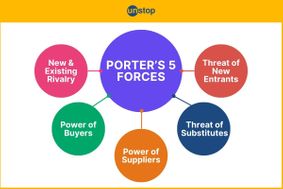



Comments
Add comment